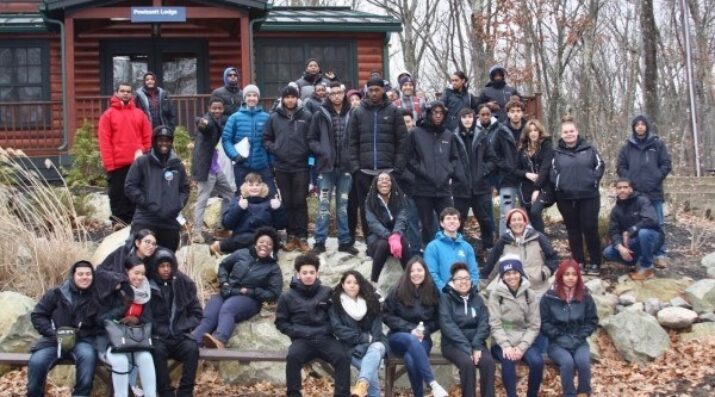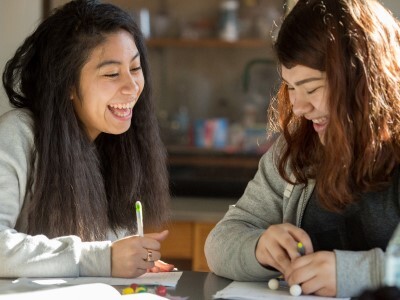Why Listening to Students Matters in Education
Topics

Next generation learning is all about everyone in the system—from students through teachers to policymakers—taking charge of their own learning, development, and work. That doesn’t happen by forcing change through mandates and compliance. It happens by creating the environment and the equity of opportunity for everyone in the system to do their best possible work.
When we involve students in decision-making, we foster a culture of participation, trust, and shared responsibility, leading to better outcomes for all.
We all want what's best for students, but sometimes, our good intentions can miss the mark if we don't truly understand their needs. Genuine understanding requires student voice. Students often have unique insights, fresh perspectives, and creative solutions that should be considered. But when students feel unheard, it can lead to frustration, resentment, and even passive or active resistance to policies and initiatives.
Let's look at a common scenario:
Principal Lane at Blue and Gold High School noticed a dip in 10th-grade ELA grades and inconsistent homework submissions. Believing she knew the solution, she implemented a mandatory "Academic Support Study Hall," replacing the 10th graders’ free period with structured ELA review. She announced the change to teachers and parents, confident this direct approach would improve academics.
The Unintended Consequences
What happened next was frustrating for everyone. Many 10th graders felt unheard and micromanaged. Their free period was often used to meet with teachers for other subjects, catch up on demanding Honors and AP work, or simply decompress.
Students already excelling in ELA felt bored and penalized by repetitive sessions. Those struggling in other subjects found the ELA focus unhelpful. Even the students most in need of ELA support became disengaged, feeling the decision was imposed without understanding their individual challenges.
Instead of better grades, Principal Lane saw increased complaints, lower morale, and a decline in engagement during the mandatory study hall. Teachers found it harder to motivate students. The very students she aimed to help felt alienated because their actual needs and how they effectively used their free time were completely overlooked.
The Profound Difference of Student Voice
This scenario highlights a critical truth: there's a profound difference between acting on behalf of students versus asking them what they need before taking action. While Principal Lane only wanted what she thought was best for her school, acting on students’ behalf without consulting them is rooted in an adult-centric, often paternalistic, model of education. It assumes adults know best and students are passive recipients. Simply asking students what they need and involve them in decision-making shifts the approach to a student-centric and to an empowering model. A model that recognizes students as valuable stakeholders with unique perspectives and capabilities, fostering a culture of active participation, cultivating trust, and shared responsibility. The approach we choose impacts everything from student engagement and academic outcomes to their personal development and the entire school climate.
Acting for students, without their input, often stems from a desire for perceived efficiency, a protective instinct, an assumption of adult expertise, or a need to maintain traditional control. While these intentions may seem logical, they carry significant downsides for students:
- Lack of Ownership: Students feel dismissed when decisions are made without their input, leading to apathy.
- Irrelevant Solutions: Adult assumptions can lead to programs that simply don't address real student needs.
- Erodes Trust: Students learn their opinions don't matter, damaging trust and open communication.
- Stifles Skill Development: Students miss opportunities to develop critical thinking, problem-solving, and advocacy skills.
- Perpetuates Passivity: They become passive recipients of education rather than active co-creators.
- Increases Resistance: Feeling unheard can lead to frustration and resistance.
- Missed Innovation: We lose out on students' fresh perspectives and creative solutions.
- Widens Equity Gaps: Decisions made without diverse student input can overlook the unique needs of marginalized groups.
Empowering Students through Listening
Conversely, actively asking students what they need before acting offers tremendous benefits:
- Increases Ownership and Engagement: Students feel valued and invested in their education.
- Leads to Effective Solutions: Students are experts on their own experiences, providing real-time insights that lead to relevant and successful initiatives.
- Builds Trust: Listening demonstrates respect and care, fostering stronger relationships.
- Develops Life Skills: Students practice communication, critical thinking, problem-solving, and advocacy.
- Fosters Empowerment: They learn their voices have power and can drive positive change.
- Improves School Climate: A school where voices are heard is a more positive and supportive environment.
- Spurs Innovation: Students offer fresh ideas and creative solutions.
- Promotes Equity: Seeking diverse student voices helps address the unique needs of all students.
Ultimately, it boils down to student agency. When we involve students in decision-making, we shift from an adult-centric, paternalistic model to an empowering, student-centric one. This fosters a culture of participation, trust, and shared responsibility, leading to better academic, social, and emotional outcomes for all.
How to Amplify Student Voices
To truly amplify student voices and create a more equitable and effective educational environment, leaders, educators, and partners can:
Create Formal and Informal Platforms for Student Input
- Integrate Student Representatives: Include students on school councils, curriculum committees, and even hiring panels. Give them real influence.
- Conduct Regular Student Surveys: Implement anonymous surveys to gather feedback on school climate, curriculum, and teaching practices. Use this data to inform improvements.
- Host Student-Led Discussions & Forums: Encourage discussions in classrooms and organize "town hall" meetings where students can openly share concerns and propose solutions.
Foster a Culture of Trust, Respect, and Empowerment
- Build Authentic Relationships: Actively listen, show empathy, and demonstrate that student perspectives are truly valued.
- Create Safe Spaces: Ensure all students feel comfortable sharing their thoughts without fear of judgment.
- Empower Student Advocacy: Teach students how to effectively advocate for themselves and others.
- Acknowledge and Validate Experiences: Show students that their voices matter by validating their feelings and perspectives.
- Communicate Impact: Clearly explain how student input will be used and what actions will be taken as a result. This builds trust and demonstrates that their voices have a real impact.
- Celebrate Contributions: Acknowledge instances where student voice has led to positive changes. Publicly acknowledging and celebrating student-led changes or innovative solutions encourages further participation.
Develop Student Leadership and Communication Skills
- Incorporate Public Speaking: Teach various forms of expression (storytelling, debate, presentations) across all subjects.
- Establish Mentorship Programs: Connect students with adult allies who can provide support, encouragement, and champion their needs.
- Offer Leadership Development: Provide programs and partnerships that train students in communication, problem-solving, and collaboration.
- Engage in Youth Participatory Action Research (YPAR): Involve students in co-leading research to understand their own experiences within the school system.
Leverage Partnerships and Community Resources
- Collaborate with Community Organizations: Partner with local youth groups that specialize in youth development and advocacy such as the Boston-based Teen Empowerment, whose mission is to employ, train, and empower youth to, in collaboration with adults, create peace, equity, and justice.
- Utilize Interactive Models: Implement models that emphasize strong student and family engagement and collaborative leadership to integrate community resources and foster shared decision-making.
By embracing these strategies that nurture student agency, we can ensure student voices are not just heard, but actively amplified and integrated into the very fabric of our educational practices. We must remember that students can offer fresh perspectives and innovative solutions to challenges which can lead to more dynamic and effective educational practices. Student feedback provides rich, qualitative data that complements quantitative data, offering a more complete picture of school effectiveness. This results in better outcomes for students academically, socially, and emotionally, and creates a more vibrant, collaborative, and effective educational system overall. What are some ways your school or community is already amplifying student voices?
Photo at top: Intrepid Academy at Hale/BPS, courtesy of Boston Public Schools




